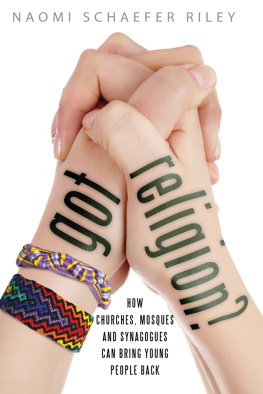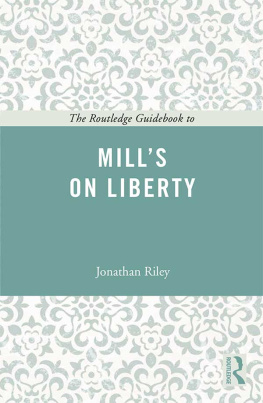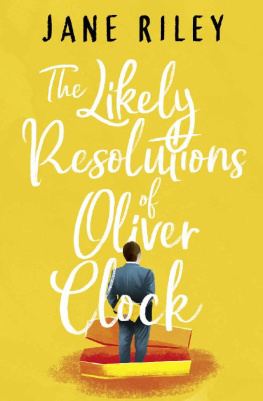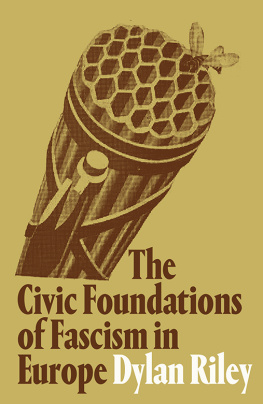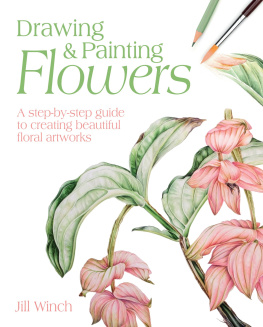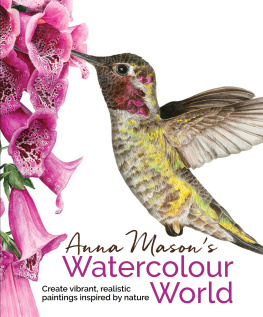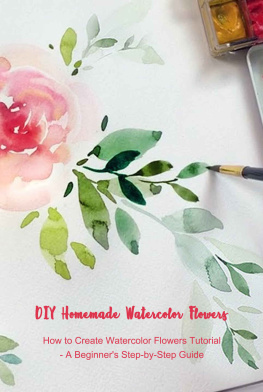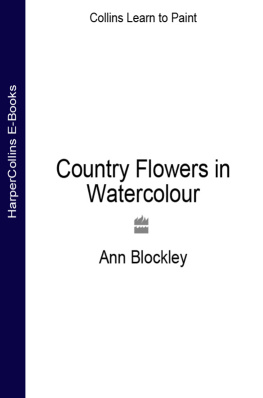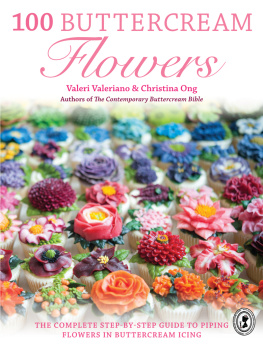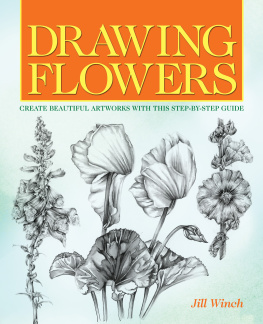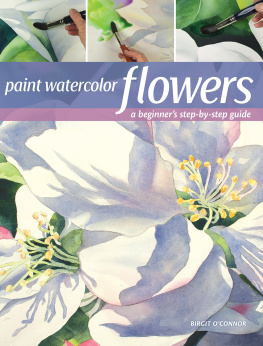THE MAGIC OF WATERCOLOUR FLOWERS
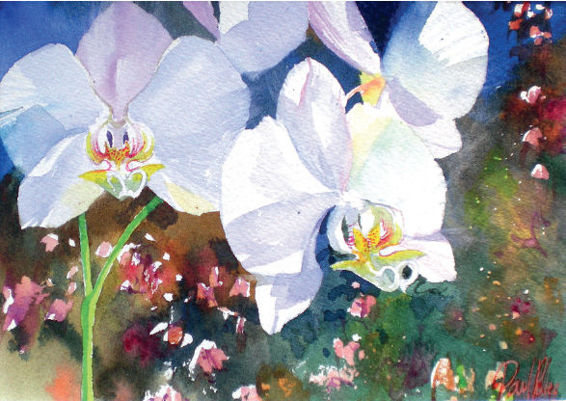
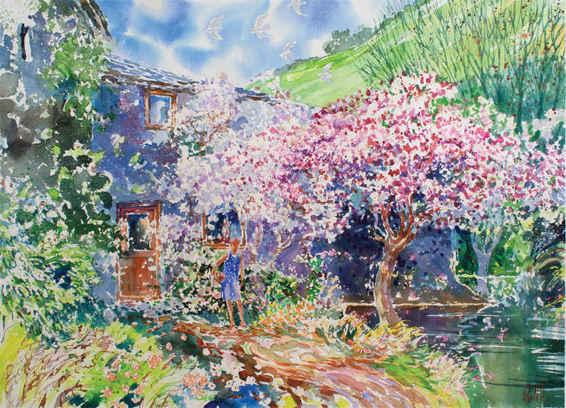
THE MAGIC OF WATERCOLOUR FLOWERS
Paul Riley

Dedication
To our grandchildren, With flowers and sun.
CONTENTS
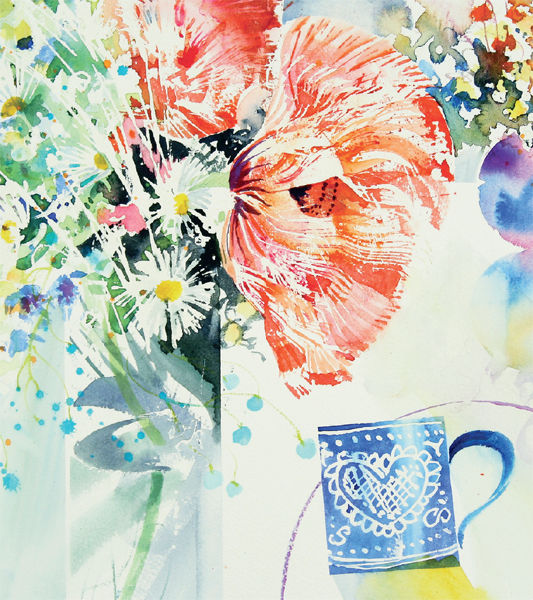
INTRODUCTION
Seeing the title on the cover, some watercolour painters might well think, What, another flower book! Fair enough, but I wanted to make this one very different. I wanted more oomph, passion and inspiration. And I wanted to express original thoughts, exploring the subconscious and stirring the imagination.
Looking at the contents list should give you a flavour of what to expect, not to mention taking a flick through the pages to see the explosions of colour for vivid chromatics are the essence of flower painting, along with the magical world of wondrous abstract shapes. This is a multi-dimensional book touching on the many aspects of our world that flowers grace not just gardens, parks and the greater landscape; they are part of our own mental landscape, for we nurture them, we present them as gifts, we enliven our homes with them and we visit famous gardens for the sheer pleasure of admiring them and enjoying their delicious fragrance.
However, if you want to paint flowers you cannot just rely on your familiarity with them. This is why I have put together a book that will not only inspire but also instruct in a way that is both accessible and stimulating for beginners and professionals alike. Some of the information will be a little simple for the experienced, but it is worth repeating. In other areas a more advanced approach is used to challenge all not least myself! I start with a chapter on inspiration, looking at sources and methods. I then put the tools into your hands and give you advice on how to use them. We shall then explore the world of chromatics and light, observing carefully and evaluating. Finally, we shall use our imagination, which knows no bounds, and see where the study of flowers in all their wonder takes us.
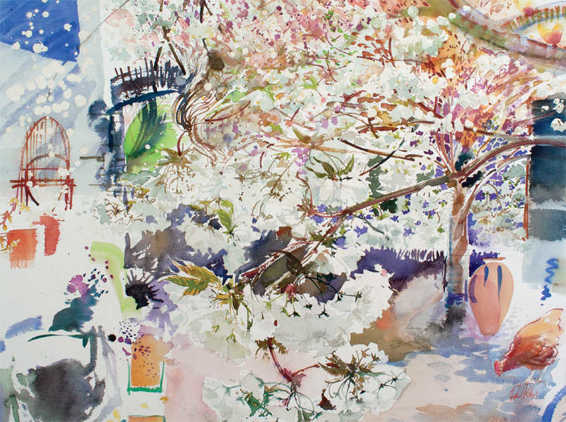
Chicken in the Courtyard, 54 x 74cm (21 x 29in)
This image shows what is possible using a variety of tools and techniques. Ones imagination is allowed to run rampant, veering towards the abstract at times.
CHAPTER 1
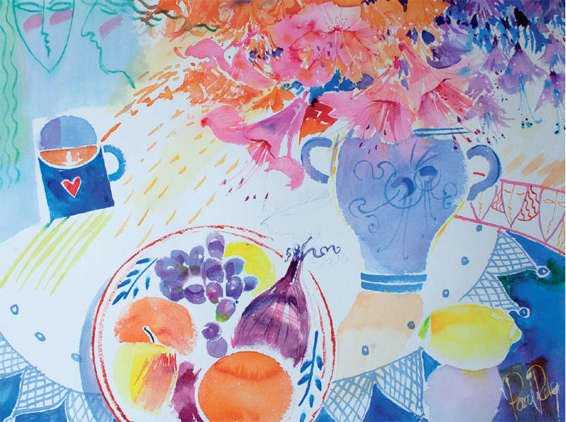
Azaleas and Red Onions, 51 x 70cm (20 x 27in)
The idea is to transform the mundane into something more inspirational. In this case I have introduced a conversation with a love cup of coffee.
INSPIRATION
What is that elusive ingredient that sets a painting on fire; that magic that beguiles the viewer? It comes from the inspiration of the artist. We artists need inspiration like lifeblood and seek it from numerous sources. In this chapter I shall give directions as to where I found my own inspiration and where you can look for yours. It will be derived from your subject matter, be it from family and home, the seasons, or a particular colour. We all have a natural affinity with a particular theme. Its how we relate to it that enables us to produce the images we do.
Following the seasons
Inspiration is about how things move us. Like nature, it is an outside force that has the ability to affect the way we think and feel. As a species we react like any animal to the need to breathe, eat, drink and procreate. We are moved by birth, love and death. Its natural, and in the observation of flowers we are made conscious of the beauty and transience of life.
As a painter I am acutely aware of how the seasons affect the way I feel and see the world about me. I am lucky to live in the countryside, so I am very aware of the differences in character between spring, summer, autumn and winter. I can see the weather changing constantly, from swathes of rain to racing cloud shadows or brilliant blue sky. The earth where I live is particularly fertile, rich in iron that gives a beautiful red glow beneath the green of the grass. Wild flowers grow profusely and it is one of my special joys to see them arrive at their allotted time as the seasons progress.
Probably the most inspiring time is spring. We wait so long during the winter months for signs of fresh new growth that the first sight of spring flowers gladdens the heart. First come the snowdrops, often while there is still snow on the ground, then the hellebores (winter roses), rapidly followed by the joyous yellows of daffodils. By this time ideas are spinning out of me to try to capture this freshness.
Following hard on the heels of this bounty are the explosions of whites, violets and reds from magnolias, camellias and rhododendrons.
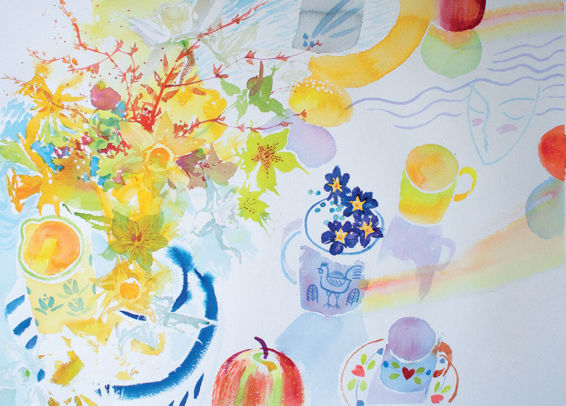
Daffodils and Primulas, 56 x 76cm (22 x 30in)
The cheery explosion of yellow daffodils in spring gladden the heart hence the love cup and the chicken about to lay.
Then in rolls summer and the opportunity to really make the most of the world of flowers. If you are lucky enough to own a garden you have the opportunity to plant and nurture the blooms of your choice. If you dont, public gardens, florists and garden centres can give you just as much stimulation. Im amazed at the choice of flowers, even in supermarkets, that enables us to produce the most flamboyant of still lifes using blooms such as roses, dahlias, fuschias and all manner of daisies.
Come the autumn things change rapidly; the fresh spring chlorophyll that greened everything is now going. The cells in leaves die and in their death produce remarkable browns, reds, oranges and yellows. However, flowers are still there to whet your appetite, including montbretia (crocosmia), calendula, and asters. At the beginning of winter you can still come across iris, begonias, witch hazel and cyclamen which will provide ample inspiration.
Throughout the year, the main sources of inspiration are greens with whites and yellows in spring; summer is a veritable kaleidoscope of primaries and secondaries; autumn is all reds and golds, while winter brings deep violets and reds. No wonder the seasons inspire painters and also poets and writers, who express the way in which flowers evoke love, pain, sorrow and joy. Reading poetry and prose gives the painter another view of the subject and invariably kicks off ideas for arrangements or ways of seeing.
When I am out walking I pick flowers and leaves and bring them back to study. I like to think Im immortalizing them. They have such brief lives it seems only right that we as humans give something back to nature rather than just destroy.
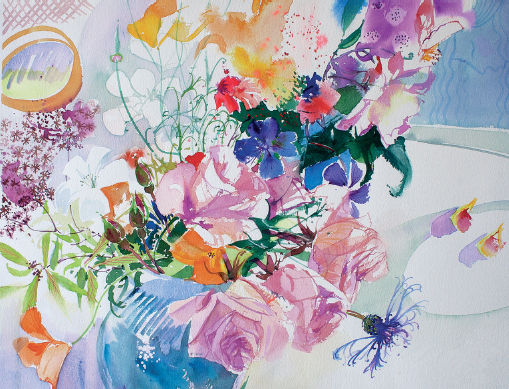
Next page

